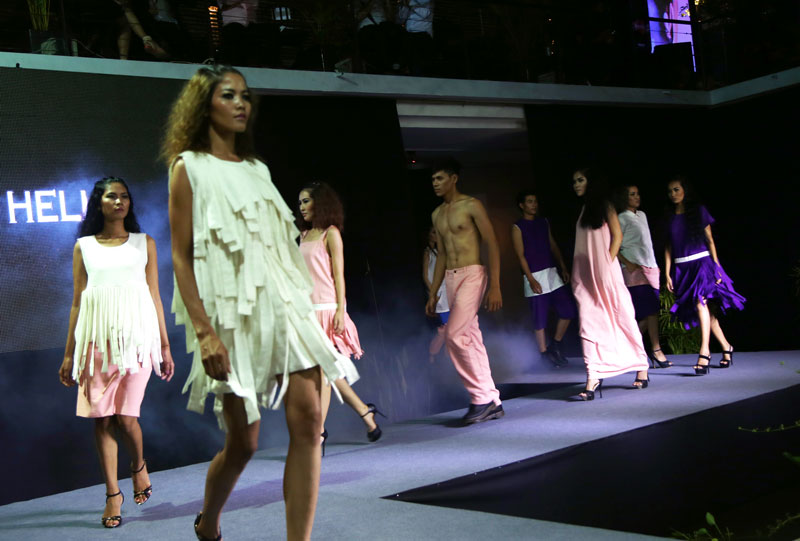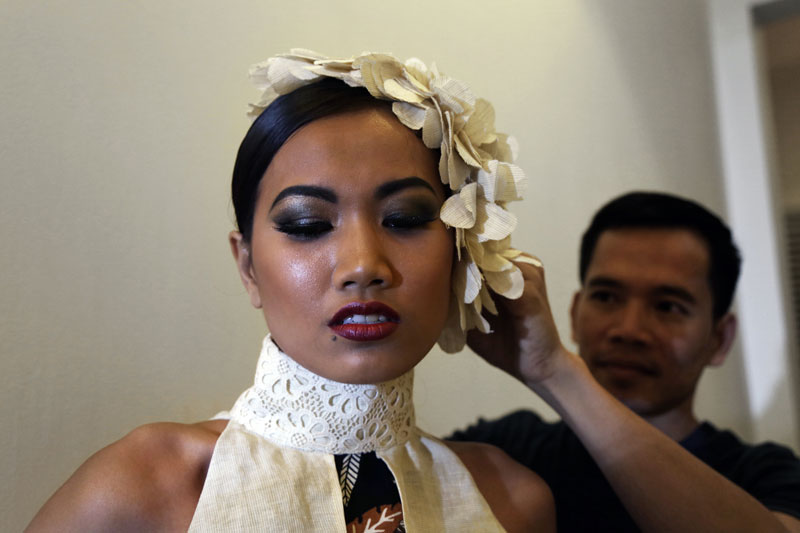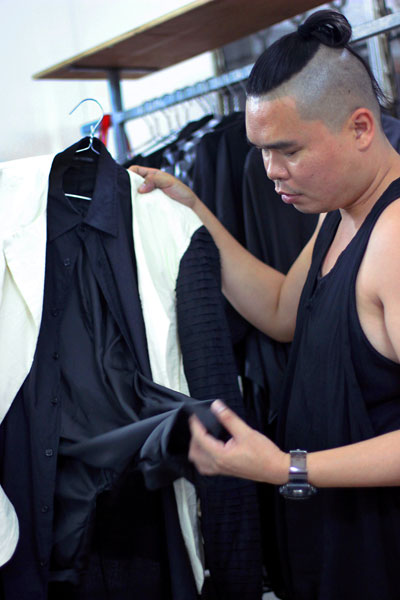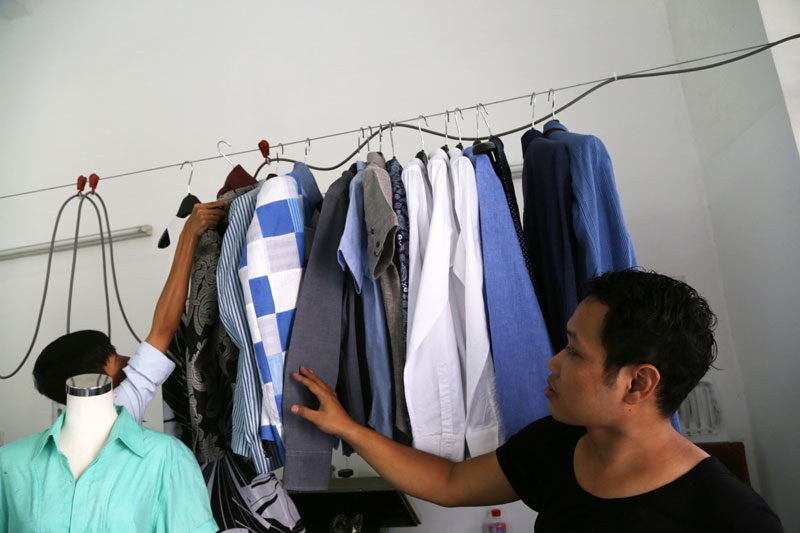In its fourth iteration, Phnom Penh Designers Week (PPDW) considers the theme “Now is the Future,” inviting avant-garde experimentation along with ready-to-wear basics from eight local and international labels.
But the fashion show, which started Thursday and ends Saturday night, also poses the question: What lies ahead for the country’s fledgling fashion industry?

Over the course of the event, organized by FashionLab magazine, the designers have been interpreting the theme in varied ways.
Pich Thavy of Phka Kn’jay, who will premiere his first collection tonight, takes retro fashion to contemporary heights with his line of linen dresses, shirts and trousers.
“My style is the 1970s style but I make it into something new,” said the 35-year-old designer, who opened his shop on Street 242 about 18 months ago.
Mr. Thavy, who has a degree in English literature, began working at a tailor shop in Phnom Penh five years ago to supplement his income.
He spent his days designing Khmer-style evening gowns, before breaking out on his own. With this collection, he says, he hopes to mature further and develop a signature style.
“This is the first thing that brings me more and more to get to designing something special, or maybe just something different from other designers: my own style,” he said. “I’m so proud and excited and nervous—it comes together.”

Meanwhile, established Street 240 fashion house A.N.D. tackled the theme through textile and technique. The collection “Pantheon: Home of the Gods,” which pays homage to Roman mythology, showed Friday as part of the menswear evening.
The androgynous collection features A.N.D.’s iconic handwoven ikat fabric, but updated with PVC overlays and upcycled pieces of garment.
“We use ikat, which is a very old, old technique. But of course we’re in the swim of the modern marketplace so we have to tweak it around a bit,” A.N.D.’s design partner Alan James Flux said.
Others, like Filipino designer Don Protasio, took a more conceptual approach. His collection, “Decay,” also presented Friday night, speaks to a near-apocalyptic future through its layered, monochromatic garments.
“It’s just a reminder to people that if we’re not careful about sustainability, about the environment, especially in the fashion industry, that’s our future: It’s going to be decay,” he said of the collection’s deconstructed aesthetic.
Yet beyond this week’s runway, there is anxiety surrounding the industry’s future.

In the past few years, Phnom Penh has seen independent fashion stores opening up on Street 240, as well as in other parts of the city. The growth is due in part to a burgeoning domestic upper-middle class, which supplements existing demand from tourists and expatriates, designers say.
The direction of that progress, however, is less certain.
A.N.D.’s Mr. Flux, for one, expressed concern about how contemporary fashion will develop along traditional craftsmanship like silk- or cotton-weaving.
“We’re not sure what the next five or 10 years will bring,” he said, citing in particular the impact of mass-producing garment factories in the country, among other industries pulling younger workers away from traditional crafts.
There are about 1,200 garment manufacturers registered with the Ministry of Industry and Handicrafts, which says there were more than 730,000 garment workers employed in the country in July 2014 compared to 670,000 the previous year.
“A lot of the younger people who might be working on village artisanal crafts or traditional techniques are now working in huge garment factories, and that’s been a major change,” Mr. Flux said.

There are also the future prospects for the designers themselves to consider. Fashion is a cutthroat business the world over, but in Cambodia, where many new designers are just gaining their foothold, the stakes are higher.
“There are a lot of designers but the industry’s too small for them to actually push themselves beyond what they can do,” said Ke Sophea, program director of PPDW and editor-in-chief of FashionLab.
“So it’s a bit risky for the designer to invest a lot of money into making a collection.”
International labels, which some wealthier Cambodians prefer to local products, are also proving to be serious competition.
“They would probably go and buy those brands, sure,” Mr. Flux said. “It’s a big, glamorous thing to buy a foreign brand.”
At the same time, domestic competition is quickly ramping up. Mr. Thavy’s biggest competitor these days? “Street 240,” he said.
“We were almost bankrupt,” he said of his store in its early days. “We didn’t know how to make our shop well-known.”

But for young designers, the toughest challenge may be internal, admitted another PPDW debutant, 24-year-old Natacha Van.
“The future of fashion to me means understanding yourself and having the passion to continue with your imagination,” said the designer from London who has been living in Cambodia for the past year.
“I sometimes like to do some extreme ideas on dresses and people still need some time to accept new things and think outside the box as sometimes my ideas don’t make sense to them.”
Industry professionals are especially encouraged by a new generation of designers graduating from recently established fashion programs, including those at Raffles International College and Limkokwing University of Creative Technology in Phnom Penh.
“A new batch of young designers are just popping out from school,” Mr. Sophea said. “I’m sure they’re doing their own thing right now. In a year or two, I’m sure you’ll see more collections.”

And he hopes this new generation will step up to the runway.
“If you put yourself out there, you’re going to be judged by people: critics, lovers and haters,” he said.
“But if you don’t take the risk, you never know, you never grow.”



